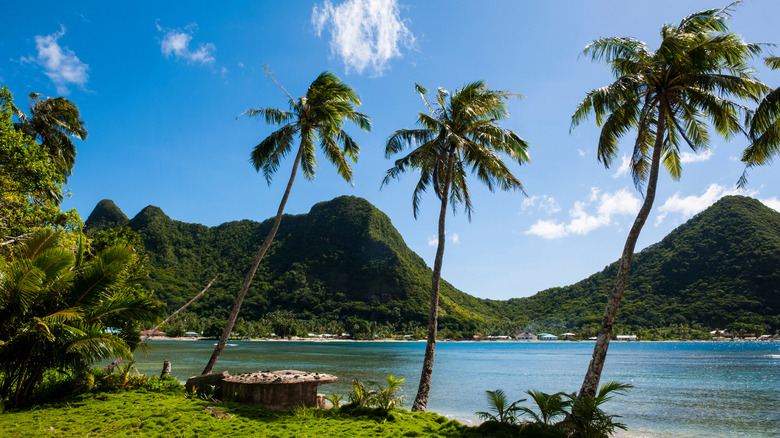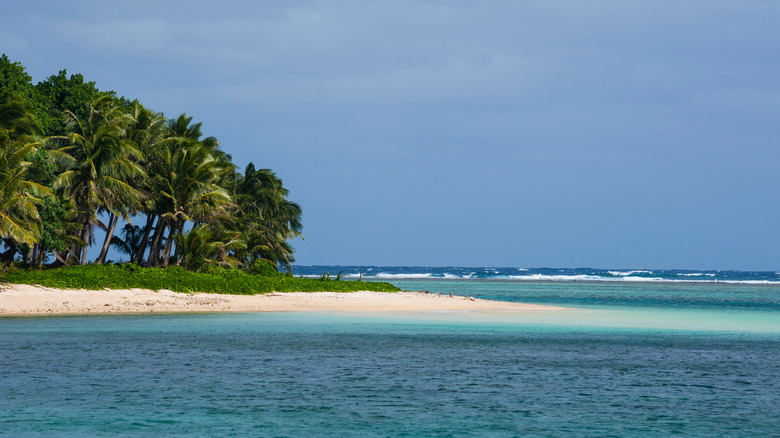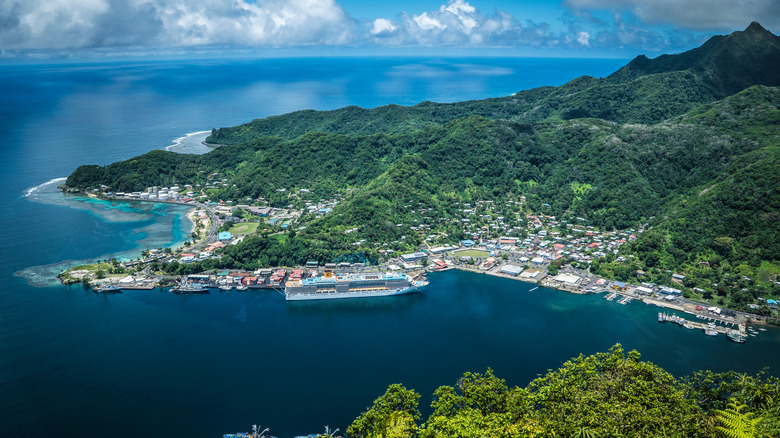America's Southernmost National Park Is Also One Of The Least Crowded And Most Breathtaking
The mention of a national park in the U.S. usually brings wide swaths of forests, diverse flora and fauna, and unique wildlife to mind. Less common would be to associate a U.S. national park with coral reefs, rainforest, and beaches, but that is exactly what you'll find at the National Park of American Samoa. Located in the South Pacific, Samoa is indeed an American territory, despite its location. Closer to New Zealand than the United States, American Samoa's remote location makes it one of the least crowded national parks, yet also undoubtedly one of the most beautiful.
The first, and only, U.S. national park in the Southern Hemisphere, the National Park of American Samoa was established in 1993. While American Samoa is actually a group of seven islands, the national park exists on just three of those islands: Tutuila, Ta'ū, and Ofu.Perfect for hiking, snorkeling, and diving, you have plenty of options for activities on each island.
An excellent option if you're looking for a little-known national park that is great for a family vacation, the National Park of American Samoa also adds a layer of Samoan culture. When visiting, some important tips to remember are to respect the Samoan way of life, fa'asamoa, and to always ask for permission. Whether you're taking a photo, swimming at a beach, or even doing something that seems insignificant, like walking on a trail, show respect with a smile and request permission from villagers. If you're fortunate enough to be invited inside someone's fale (traditional house), sit down before doing anything else, cross your legs, and cover them with a mat. On Sundays, villages are quiet as that is a day for rest and church. Be respectful, and plan accordingly, as you might not even be able to swim. Respect evening prayers without interrupting, and to show respect, always sit down to eat and drink.
Exploring Tutuila, Ta'ū, and Ofu
On Tutuila, spend your days hiking the lush rainforest. The Mount 'Alava Trail is a 7-mile round-trip hike where you'll be able to enjoy breathtaking, panoramic views of the entire island. If you're really adventurous (and more experienced), try the Mount 'Alava Adventure Trail. It's a little shorter at 5.6 miles round-trip, but it has 56 ladders and almost 800 steps along precarious ridgelines. Not for the faint of heart, this trail will get your blood pumping. If you want to opt for a more relaxed day, take your time wandering the Le'ala Shoreline, where you can experience Samoan culture and meet friendly locals in the villages.
To get to Ofu (or Ta'ū), you can take a ferry or a quick flight with Samoa Airways. The ferry is preferable, it just depends on your schedule and availability. On Ofu, the main highlight is the coral reefs, as the majority of the national park on this island is underwater. You can swim, snorkel, and dive there, exploring the unspoiled reefs. Remember to bring your own gear as rentals are limited to nonexistent. There are shallow reefs that are perfect for beginners and deeper ones if you're more confident. The crystal clear water on Ofu makes it likely that you'll be able to see nearly 1,000 types of fish and 250 coral species on the vibrant reefs.
If you'd like to explore the rainforest on Ta'ū, transportation from Ofu is tricky. Local fishermen will take you, but there are no formal transportation options, so you must coordinate with locals in advance. As for hikes, try the Si'u Point Trail, which is just under 6 miles, and weaves through coastal forests. For something a little more unexpected, you can hire a local guide to take you off the beaten path.
Planning your visit
The good news about visiting the National Park of American Samoa is that it is one of the least crowded, pretty much guaranteeing an uninterrupted experience in the tropical environment. The not-so-good news is that it isn't the easiest place to get to, but that's also why it's one of the lesser-visited parks. Ultimately, the extra effort and travel time are worth it, especially if you add your visit to another destination nearby. You could explore New Zealand's foodie paradise near Auckland or Australia's underrated Great Barrier Reef archipelago.
To get to the National Park of American Samoa, you need to fly to Pago Pago International Airport on the island of Tutuila. It's a five-and-a-half-hour flight from Honolulu, and all U.S. mainland flights connect through Honolulu. Surprisingly, the park doesn't have any entry fees, and while it's open year-round, the best time to go is the dry season, which is May through October. Since crowds tend to be light, you should be ok to visit in summer without the peak crush of tourists that many of the national parks in the continental U.S. tend to have. Americans don't need a visa to enter or exit American Samoa, but you do need to have at least six months' validity on your passport.
Packing for your visit is fairly straightforward. Remember, it's a tropical climate, so bring light, breathable clothes and good hiking shoes with traction. Sunscreen and a hat are a must, as is a water bottle. Thanks to the tropical climate, you can also plan on plenty of insects, so make sure to remember the repellent. And of course, if you're going to be snorkeling (which you absolutely should), remember to bring your own gear. Pack all your snacks, and most importantly, leave no trace.


